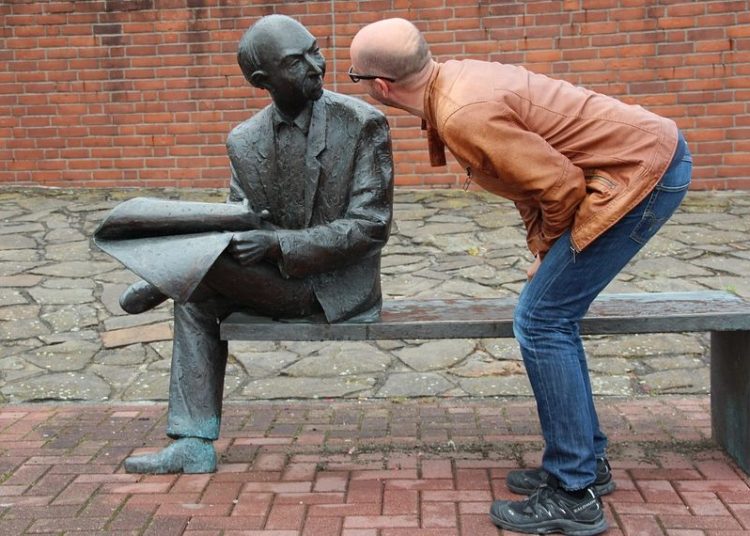[ad_1]
The Power of Curiosity: Unleashing the Potential of Education in the Digital Age
In today’s fast-paced digital world, curiosity has become a powerful tool for unlocking the potential of education. With the vast amount of information available at our fingertips, curiosity can drive us to explore new ideas, concepts, and technologies that can enhance our learning experience. This article will discuss the importance of curiosity in education, how it can be harnessed in the digital age, and the impact it can have on student success.
What is Curiosity?
Curiosity is a strong desire to know or learn something new. It is an intrinsic motivation that drives us to seek out information, explore new ideas, and engage in lifelong learning. Curiosity is often sparked by questions, challenges, or curiosity gaps – areas where our existing knowledge is lacking or incomplete. When we are curious, we are more likely to actively seek out information, engage in problem-solving, and pursue new opportunities for growth and development.
Curiosity plays a crucial role in education, as it can lead to deeper learning, increased motivation, and improved critical thinking skills. By fostering curiosity in the classroom, educators can create a more engaging and interactive learning environment that encourages students to explore, experiment, and discover new concepts and ideas.
Harnessing Curiosity in the Digital Age
In the digital age, technology has made it easier than ever to satisfy our curiosity and access a wealth of information. With the click of a button, we can explore virtual worlds, connect with experts, and access online resources that can enhance our learning experience. Technology has also created new opportunities for collaborative learning, as students can now engage with peers and educators from around the world through online platforms and digital tools.
To harness curiosity in the digital age, educators can incorporate technology into their teaching practices and create interactive learning experiences that encourage students to explore and discover new ideas. By integrating digital tools, such as educational apps, online resources, and virtual simulations, educators can provide students with hands-on learning opportunities that spark their curiosity and engage their imagination.
One example of harnessing curiosity in the digital age is the use of virtual reality (VR) technology in education. VR can transport students to different time periods, locations, or environments, allowing them to explore and interact with new concepts in a more immersive and engaging way. By incorporating VR into the curriculum, educators can create memorable learning experiences that stimulate curiosity and inspire students to explore new ideas.
Impact of Curiosity on Student Success
Curiosity has a profound impact on student success, as it can drive motivation, improve learning outcomes, and foster a growth mindset. When students are curious, they are more likely to actively engage in the learning process, ask questions, and seek out new challenges. Curiosity also encourages students to take risks, experiment, and learn from their mistakes, leading to a deeper understanding of concepts and ideas.
Research has shown that curiosity is a key predictor of academic achievement. Students who are curious tend to perform better in school, have higher levels of motivation, and demonstrate greater resilience in the face of challenges. By fostering curiosity in the classroom, educators can help students develop critical thinking skills, improve problem-solving abilities, and cultivate a lifelong love of learning.
Tips for Fostering Curiosity in Education
There are many ways to foster curiosity in education and unleash the potential of students in the digital age. Here are some tips for educators looking to harness the power of curiosity:
1. Encourage questions: Create a classroom environment where questions are welcomed and encouraged. Encourage students to ask questions, explore new ideas, and engage in meaningful discussions.
2. Provide hands-on learning opportunities: Use digital tools, such as simulations, virtual reality, and educational apps, to create hands-on learning experiences that engage students and spark their curiosity.
3. Foster a growth mindset: Encourage students to embrace challenges, take risks, and learn from their mistakes. Help students develop a growth mindset that values effort, persistence, and resilience.
4. Encourage exploration: Create opportunities for students to explore and discover new ideas. Provide students with access to online resources, guest speakers, and experiential learning opportunities that inspire curiosity and spark creativity.
By fostering curiosity in education, educators can empower students to unlock their potential, explore new ideas, and become lifelong learners in the digital age. Curiosity is a powerful tool that can drive motivation, enhance learning outcomes, and fuel innovation. By embracing curiosity as a cornerstone of education, we can create a more engaging and interactive learning experience that prepares students for success in an ever-changing world.
[ad_2]

Discussion about this post